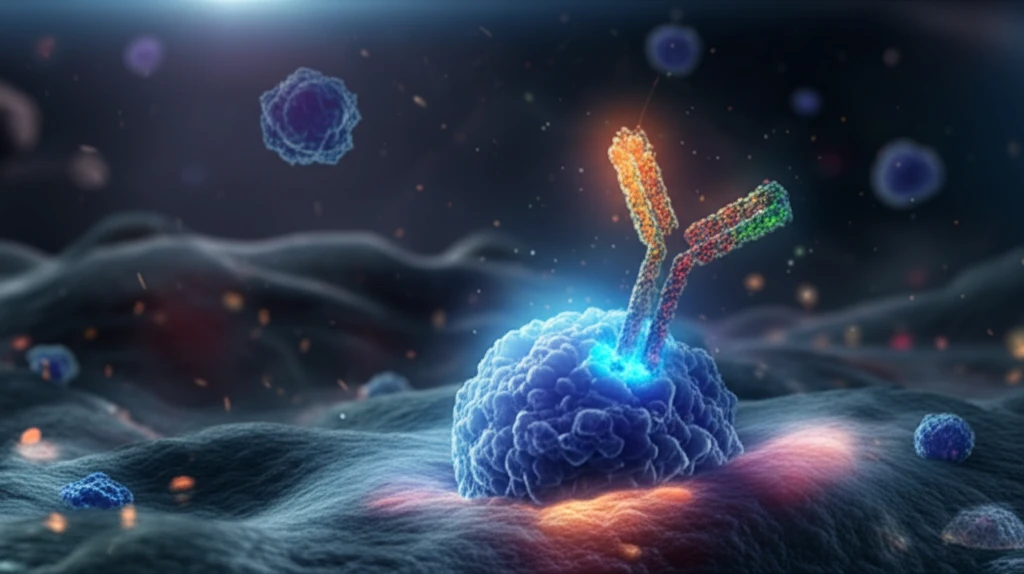
PSMA Ligands: The Future of Prostate Cancer Theranostics?
"Exploring 2-Aminoadipic Acid-C(O)-Glutamate Based Ligands for Targeted Prostate Cancer Treatment and Imaging"
Prostate cancer (PCa) remains a significant health challenge, ranking as one of the most frequently diagnosed cancers and a leading cause of death among men in the United States. The financial burden of managing PCa is substantial, highlighting the urgent need for more effective diagnostic and therapeutic strategies. Prostate-specific membrane antigen (PSMA) has emerged as a promising target because PCa cells highly overexpress it compared to normal cells. This overexpression is often linked to poorer disease outcomes, making PSMA an attractive focus for targeted interventions.
Researchers have been diligently developing PSMA ligands, including antibodies, peptides, aptamers, and small molecules, to deliver imaging agents for cancer diagnosis. Among these, small molecules offer advantages such as ease of synthesis, reduced immunogenicity, and rapid clearance from normal tissues. Early efforts in 2001 introduced urea-based PSMA inhibitors, which have since become a cornerstone for PSMA targeting due to their high affinity and synthetic accessibility. Recent clinical trials utilizing 18F or 68Ga-labeled PSMA ligands for PET imaging have shown promise but also revealed off-target uptake in the kidneys and salivary glands.
Addressing these challenges, scientists are exploring ways to enhance compounds' hydrophilicity to promote faster clearance from non-target tissues. Despite extensive research on PSMA ligands, the impact of varying the length of the amino acid moiety—beyond the essential glutamate—on PSMA affinity remains largely unexplored. In this context, the research investigates 2-aminoadipic acid as a novel building block to optimize chain length and improve interactions with the S1 hydrophobic pocket of PSMA, potentially reducing the required dosage and enhancing image resolution.
Unlocking PSMA Potential: How Novel Ligands Are Changing the Game

The study focuses on 2-aminoadipic acid, a building block not previously utilized in PSMA ligands, to explore its potential in enhancing PSMA affinity. Researchers synthesized fluorinated PSMA ligands incorporating 2-aminoadipic acid to improve imaging resolution, leveraging the benefits of the radionuclide 18F. The synthesis involved protecting the distal carboxyl group of L-2-aminoadipic acid with benzylation, followed by coupling with an isocyanate. Subsequent steps included protecting the free carboxyl group as a tert-butyl ester and deprotecting the benzyl ester through hydrogenation.
- Benzylamide Derivatives: The IC50 values for benzylamide derivatives 7a-7c were nearly identical, indicating that the position of the fluorine atom does not affect their potency.
- Methyl Group Introduction: Introducing a methyl group on the amide nitrogen of 7a and 7b increased their potency for PSMA (compounds 8a and 8b).
- Benzylic Position Methylation: Compounds 9a and 9b, with a methyl group attached to the benzylic position, exhibited significantly lower inhibitory affinity for PSMA compared to 7a and 8a. This decrease is attributed to steric hindrance, where the methyl group clashes with the side chain of Arg463, disrupting the insertion of the inhibitor ring into the S1 hydrophobic pocket.
- Pyridine Ring Substitution: Compound 10, where the benzene ring is replaced with a pyridine ring, showed marginally lower affinity compared to 7a.
The Future of PSMA Ligands in Prostate Cancer Treatment
In conclusion, the research successfully designed and synthesized PSMA ligands derived from 2-aminoadipic acid, a novel building block for PSMA ligands. Among the synthesized ligands, compound 13b exhibited the highest inhibitory activity for PSMA. The labeling methods previously described for [18F]DCFPyL and [18F]PSMA-1007 offer strong support for the potential preparation of [18F]13b. A branching moiety can be attached to the amide function of 13b, enabling the modulation of physicochemical and pharmacokinetic properties of the next-generation compounds while preserving the high affinity of the original compound for PSMA.
